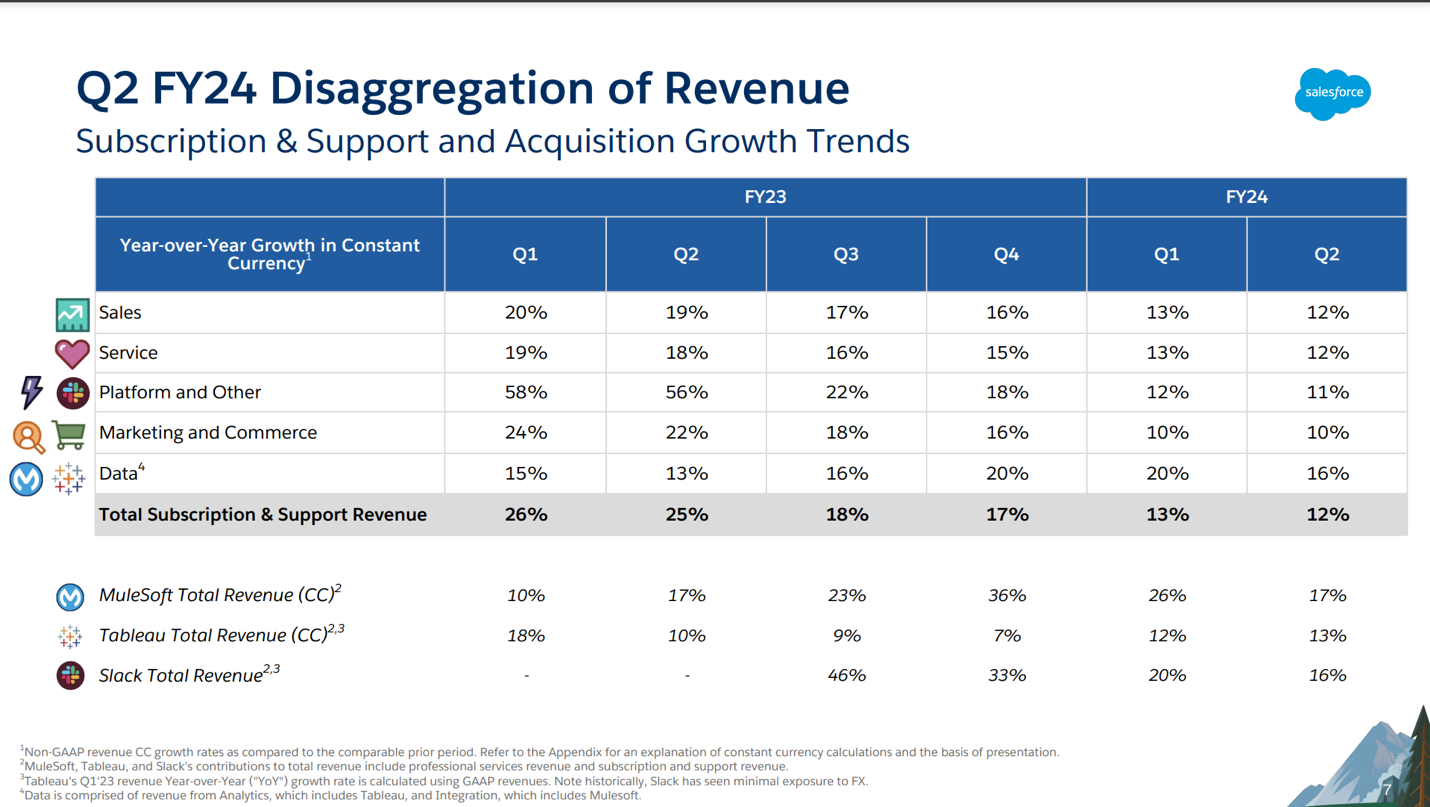
During Salesforce‘s earnings call last week, the legendary Marc Benioff raved dozens of times about his company’s “incredible” and “amazing” performance while cagily and repeatedly refusing to make any commitment to boosting revenue growth beyond its current tepid level of 11%.
While Salesforce’s stock price is rising on the strength of its vastly improved margins and profitability, the company’s growth rate has plummeted to among the lowest within the Cloud Wars Top 10, a precarious status in a market filled with savagely competitive rivals growing far more rapidly than is Benioff’s company.
Before I get to that big revenue problem, though, let’s list some of Salesforce’s primary attributes:
- Yes, it remains a remarkable force in the global tech market;
- Yes, it appears to have an impressive stable of new and emerging products and services to capitalize on the GenAI Revolution;
- Yes, Benioff is absolutely correct to be repositioning Salesforce as an AI and data company as much as a CRM company; and
- Yes, Salesforce is the third- or fourth-largest enterprise software company in the world.
But here’s the problem: The company reported fiscal-Q2 growth of just 11%, and guided to the same lukewarm level for Q3 (which ends Oct. 31), in spite of very strong performances in several of its product lines. So with multiple pockets of outsized success, why is the overall growth just 11%? That would seem to indicate that some product lines and/or business units are cratering because, otherwise, how do all those bright spots get watered down into an overall growth of just 11%?
A slide below offers some powerful insight into that big question, but first, let’s look at the external market dynamics as well as the internal product lines Benioff and his colleagues called out for performing so well in Q2:
Benioff on the AI boom: “We are at the dawn of an AI revolution. And as I’ve said, it’s a new innovation cycle that is sparking a massive tech-buying cycle over the coming years.” Sounds extremely promising — so where’s the big boost for Salesforce? Benioff would not say.
Customers buying multiple products: President Brian Millham said, “In the quarter, we saw consistent demand in our core business, and we continue to benefit from customers consolidating their technology platforms to reduce complexity and drive efficiency and growth. Six of our top 10 wins in the quarter included five or more clouds.” Salesforce confusingly — and annoyingly — refers to those as “multi-cloud” deals, a practice this excellent company should drop immediately because while it might be self-serving for Salesforce, it only makes things more complicated for customers.
Data Cloud is Saleforce’s fastest-growing cloud ever: “Data Cloud is one of our fastest-growing organic innovations ever, and it lets customers unlock the power of their data to supercharge every application and customer experience with AI, automation, and analytics,” Millham said on the call. This is driving our strong momentum. Data Cloud was in five of our top 10 deals in the quarter, and we saw great wins at companies like SiriusXM and KPMG. In the quarter, FedEx made a significant investment in Salesforce by adding Data Cloud.

Gain insight into the way Bob Evans builds and updates the Cloud Wars Top 10 ranking, as well as how C-suite executives use the list to inform strategic cloud purchase decisions. That’s available exclusively through the Acceleration Economy Cloud Wars Top 10 Course.









